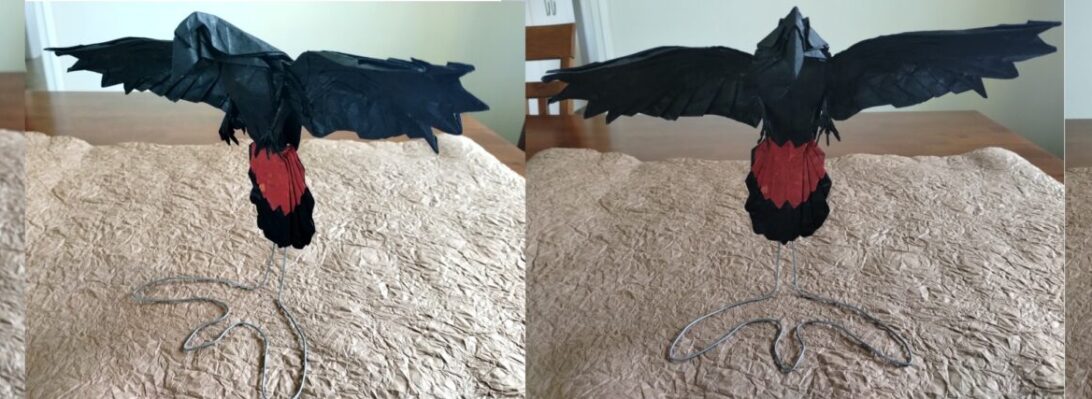Some folds are good for telling you that you still have much to learn – this is one of them:
An ASTONISHING model, that took me an age to almost achieve, so many different techniques and punishing to the paper. I started yesterday morning with a 60cm square of brown paper determined to keep folding until either I totally buggered it up, the paper disintegrated or it worked.
As it turned out, errors (small inaccuracies) in folding early on, and a few misinterpretations of unexplained folds meant that later stages were more complicated and hence less tidy.
I have learnt a lot from this fold – there are some breathtaking manoeuvres and heart stopping moments when you turn the page and the next instruction is “unfold everything” but in the end I am satisfied that I got a vaguely “ancient dragonny” model and more importantly I now know what goes where. I will fold this again and am sure that second time around the result will be tidier but take a moment to consider the details:
8 horns, skull, eyes, jaw on the head alone, lovely toes, 4 of them on each of 4 feet, amazing wings that look like they are flapping, leathery scaled body (a ridgetail, for sure – Potter fans agree?). The body, at it’s thickest, has over 40 layers which makes some of the shaping and final modelling tough work. I am at a loss to know what sort of paper you could do this with – I am however amazed with the brown paper – it did not tear or fatigue even once – long after the folder had sworn, stormed off only to return later and keep trying.
I am really glad I tried this model, a useful reminder that I am no master of the art, merely this guy who bends paper,


















































